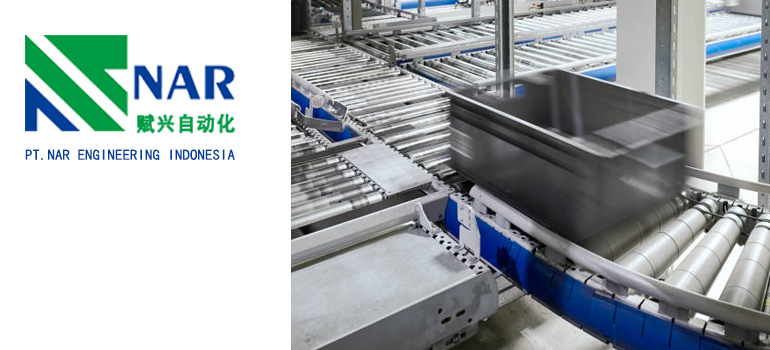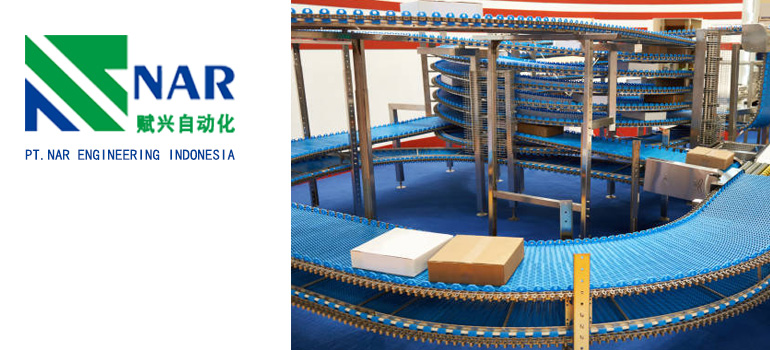Summary:
The Essential Guide to Belt System Components: Everything You Need to Know
What Are Belt System Components?
Why Understanding Belt System Components Matters
Common Types of Belt System Components
Functions and Mechanisms of Belt System Components
Maintenance and Troubleshooting Tips for Belt System Components
What Are Belt System Components?
Belt system components refer to the essential parts that constitute a belt drive system used in various mechanical applications. These components work together to transfer power from one rotating shaft to another through the use of flexible belts.
The main belt system components typically include:
Belts: These are flexible loops or bands made from materials such as rubber, neoprene, or other synthetic materials. Belts wrap around pulleys and transmit power through frictional forces.
Pulleys: Pulleys are wheels with a groove or grooves around its circumference. They are used to guide and support the belts, providing the necessary traction and tension to transmit rotational motion.
Tensioners: Tensioners are devices used to maintain the proper tension in the belts. They ensure that the belts are neither too loose nor too tight, which is crucial for efficient power transmission and to prevent slippage.
Idlers: Idlers are similar to pulleys but are used to change the direction of the belt, guide the belt around an obstacle, or to provide additional support.
Bearings: Bearings support the rotating shafts that the pulleys are mounted on, reducing friction and allowing smooth rotation.
Shafts and Mounting Structures: These provide support and alignment for the pulleys and bearings within the system.
Accessories: Depending on the specific application, additional components such as guards, covers, and lubrication systems may also be included to enhance safety and longevity.
These components collectively form the backbone of belt drive systems, which are widely used in industries ranging from automotive and manufacturing to HVAC systems and household appliances. Understanding these components and their interactions is crucial for designing, maintaining, and troubleshooting belt drive systems effectively.
Why Understanding Belt System Components Matters?

Understanding belt system components is crucial for several reasons, each impacting the efficiency, reliability, and safety of mechanical systems:
Optimized Performance: Knowledge of belt system components allows engineers to select the right type of belts, pulleys, and tensioners for specific applications. This selection ensures optimal power transmission efficiency, minimizing energy loss and maximizing system performance.
Reliability and Durability: Proper understanding helps in designing robust systems that can withstand operational stresses and environmental conditions. This includes choosing components with appropriate load-bearing capacities and durability, reducing the risk of premature wear and failures.
Maintenance and Troubleshooting: Familiarity with belt system components facilitates proactive maintenance practices. Engineers can establish inspection schedules, identify potential issues early, and perform timely replacements or adjustments to avoid costly downtime.
Safety: Faulty belt systems can pose safety hazards due to sudden failures or slipping belts. Understanding components aids in implementing safety measures and ensuring compliance with industry standards to protect personnel and equipment.
Efficiency and Cost-effectiveness: Well-designed belt systems operate efficiently, reducing energy consumption and operational costs. Understanding component interactions enables engineers to optimize system layouts, minimizing unnecessary components and improving overall efficiency.
Environmental Impact: Efficient belt systems contribute to environmental sustainability by reducing energy consumption and minimizing resource use. Understanding components helps in designing systems that meet environmental regulations and standards.
Innovation and Adaptability: Continuous advancements in materials and technologies for belt system components offer opportunities for innovation. Understanding these developments allows engineers to adopt new technologies and improve system performance over time.
In essence, understanding belt system components is not just about mechanical knowledge but also about optimizing performance, ensuring reliability, enhancing safety, and contributing to sustainability in various industrial and commercial applications. It forms the foundation for efficient and effective mechanical engineering practices.
Common Types of Belt System Components
Common types of belt system components include:
Belts: Belts are flexible loops made from materials like rubber, neoprene, or polyurethane. They transmit power between shafts by wrapping around pulleys and transferring rotational motion through frictional forces.
Pulleys: Pulleys are wheels with a grooved rim designed to guide belts and provide traction. They come in various types, including V-belt pulleys, flat pulleys, and timing pulleys, each suited for different types of belts and applications.
Tensioners: Tensioners maintain the proper tension in belts to prevent slippage and ensure efficient power transmission. They can be automatic or manual and adjust tension as belts stretch or wear over time.
Idlers: Idlers are similar to pulleys but do not transmit power. Instead, they guide the belt around obstacles or change its direction, providing support and maintaining belt alignment.
Bearings: Bearings support the rotating shafts on which pulleys are mounted. They reduce friction and allow smooth rotation, contributing to the overall efficiency and longevity of the belt drive system.
Shafts and Mounting Structures: Shafts provide the rotational axis for pulleys and other components. Mounting structures, such as brackets and housings, support and align the shafts and bearings within the system.
Accessories: Accessories like guards, covers, and lubrication systems enhance safety and protect components from environmental factors such as dust, moisture, and debris.
Understanding these common types of belt system components is essential for designing, maintaining, and troubleshooting belt drive systems across various industries, ensuring optimal performance, reliability, and safety. Each component plays a crucial role in the overall efficiency and functionality of the system, making proper selection and maintenance critical for long-term operational success.
Functions and Mechanisms of Belt System Components
The functions and mechanisms of belt system components are fundamental to understanding how these components work together to transmit power efficiently in mechanical systems. Here’s a breakdown of their roles:
Belts:
Function: Belts transmit power between shafts by wrapping around pulleys and using frictional force.
Mechanism: As the driving pulley rotates, it moves the belt, which in turn rotates the driven pulley connected to another shaft. This mechanism allows for the transfer of rotational motion and power.
Pulleys:
Function: Pulleys guide and support belts, providing the necessary traction and tension for efficient power transmission.
Mechanism: The groove on the pulley’s rim aligns with the belt, preventing slippage and ensuring the belt stays in place while transmitting rotational energy. Different types of pulleys, such as V-belt and timing pulleys, are used depending on the application and type of belt.
Tensioners:
Function: Tensioners maintain proper belt tension to prevent slipping and ensure optimal power transmission.
Mechanism: They automatically or manually adjust the tension of the belt as it stretches or wears over time. This ensures consistent performance and extends the lifespan of the belt.
Idlers:
Function: Idlers guide the belt around obstacles, change its direction, or maintain belt tension in certain configurations.
Mechanism: Similar to pulleys, idlers have a smooth surface or minimal grooving to support the belt without adding additional driving force. They help maintain belt alignment and prevent excessive wear on the belt’s edges.
Bearings:
Function: Bearings support the rotating shafts on which pulleys are mounted, reducing friction and allowing smooth rotation.
Mechanism: They enable pulleys to rotate freely and transmit power efficiently without excessive heat or wear. Proper lubrication and maintenance of bearings are essential for prolonging their lifespan and ensuring reliable operation.
Shafts and Mounting Structures:
Function: Shafts provide the axis of rotation for pulleys and support other components within the belt drive system.
Mechanism: Mounting structures such as brackets and housings secure shafts and bearings, ensuring proper alignment and reducing vibration. This contributes to the overall stability and longevity of the system.
Accessories:
Function: Accessories like guards, covers, and lubrication systems protect components from environmental factors and ensure safe operation.
Mechanism: Guards and covers shield belts and pulleys from debris, while lubrication systems reduce friction and wear on moving parts, enhancing overall system efficiency and durability.
Understanding these functions and mechanisms is essential for designing and maintaining efficient belt drive systems. Each component plays a critical role in ensuring smooth power transmission, minimizing downtime, and maximizing the lifespan of equipment in various industrial and mechanical applications.
Maintenance and Troubleshooting Tips for Belt System Components
Maintaining and troubleshooting belt system components is crucial for ensuring optimal performance, minimizing downtime, and extending the lifespan of equipment. Here are some essential maintenance and troubleshooting tips:
Maintenance Tips:
Regular Inspection:
Check Belt Condition: Inspect belts for signs of wear, cracking, or stretching. Replace worn-out belts promptly to prevent failures.
Inspect Pulleys: Check pulleys for wear, misalignment, or damage to the grooves. Ensure pulleys are clean and free from debris.
Examine Tensioners and Idlers: Verify tensioners maintain proper tension and idlers are aligned and functioning correctly.
Inspect Bearings: Check bearings for smooth rotation and signs of wear or noise. Lubricate bearings as recommended by the manufacturer.
Belt Alignment and Tension:
Adjust Belt Tension: Maintain proper tension using tensioners. Over-tensioning can cause premature wear, while under-tensioning can lead to belt slipping.
Align Pulleys: Ensure pulleys are aligned correctly to prevent excessive wear on belts and components. Use alignment tools if necessary.
Cleanliness and Lubrication:
Keep Components Clean: Remove dirt, debris, and buildup from belts, pulleys, and idlers regularly. This prevents abrasion and improves efficiency.
Lubricate Bearings: Apply lubricant to bearings as recommended by the manufacturer to reduce friction and extend their lifespan.
Replace Components Proactively:
Replace Worn Parts: Replace belts, pulleys, tensioners, and bearings before they fail to avoid unexpected downtime and potential damage to other components.
Troubleshooting Tips:
Identify Common Issues:
Belt Slipping: Check for insufficient tension, worn belts, or contamination on pulleys.
Excessive Noise: Inspect for misaligned pulleys, worn bearings, or loose components causing vibrations.
Overheating: Look for over-tensioned belts, lack of lubrication, or excessive friction due to misalignment.
Systematic Approach:
Isolate the Problem: Identify the specific component causing the issue through visual inspection and testing.
Refer to Manufacturer Guidelines: Consult equipment manuals and maintenance guidelines for troubleshooting specific to your system.
Adjustments and Corrections:
Adjust Belt Tension: Correct tension using tensioners according to specifications.
Align Pulleys: Use alignment tools to align pulleys correctly if misalignment is detected.
Replace Faulty Components: Replace worn-out belts, pulleys, or bearings to resolve persistent issues.
Monitor Performance:
Track Changes: Keep records of maintenance activities, including belt replacements, adjustments, and troubleshooting outcomes.
Monitor Temperature and Noise: Regularly check operating temperatures and listen for unusual noises that may indicate potential issues.
By following these maintenance and troubleshooting tips, you can enhance the reliability, efficiency, and longevity of belt system components in your mechanical applications. Regular inspection, proactive maintenance, and prompt troubleshooting are key to minimizing downtime and optimizing system performance.

